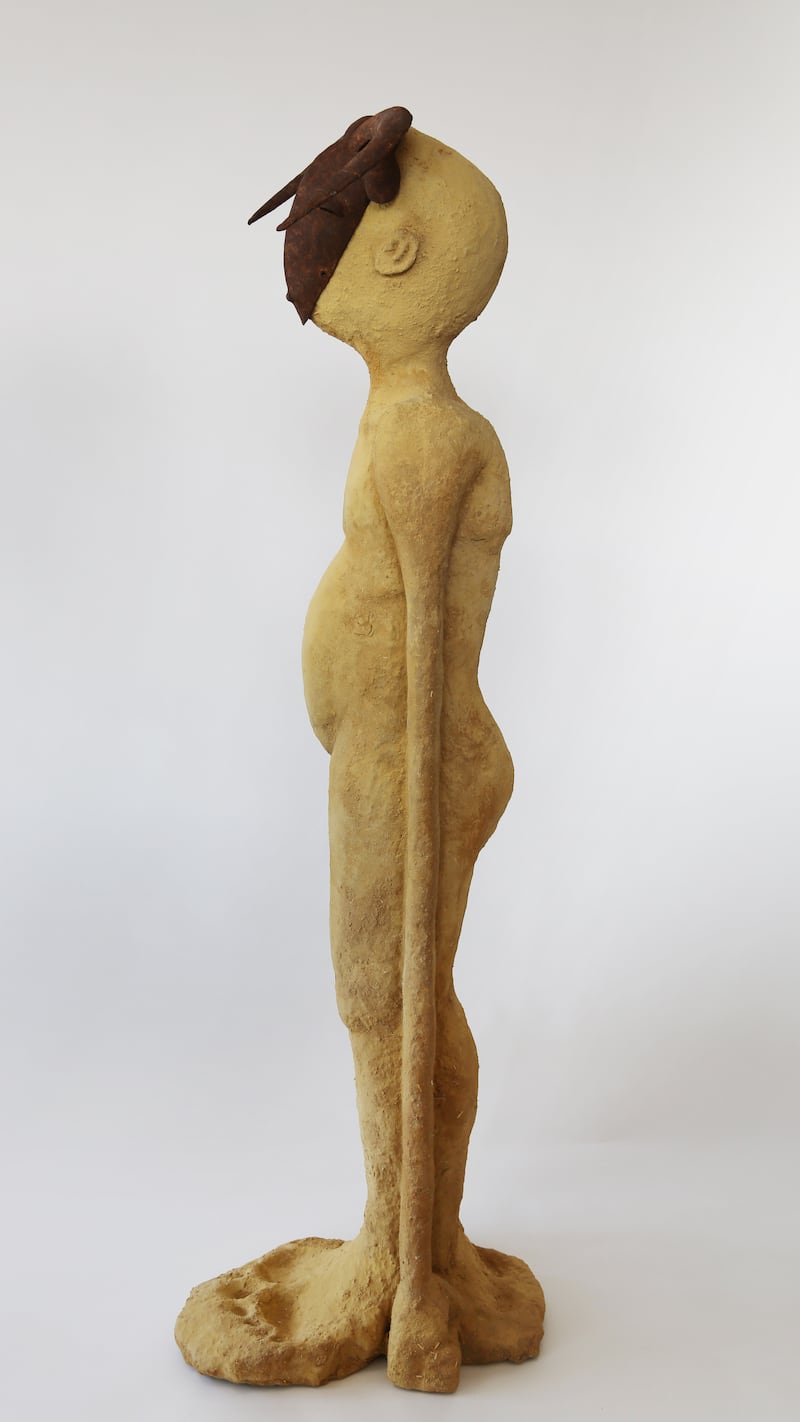From the very dawn of time, humanity has placed mud, earth and dirt as the genesis of life, but also as the eventual fate of all livening things – part of the the never-ending cycle of construction and destruction. This concept has bled into ancient Sumerian mythology, Jewish folklore, Maori and Chinese creation myths and Hindu and Yoruba cosmology over the ages.
In Lebanese artist and director Ali Cherri’s first solo show in the US, staged at the cultural non-profit Swiss Institute, mud is the focal point; his building blocks for exploring ancient civilisation and myths, violence, ecology and the importance this material still holds in our modern society.
Titled Humble and Quiet and Soothing as Mud, the show opens on Wednesday and is split over two floors, showing newly commissioned sculptures and a three-channel video installation works filmed in Sudan.
“I'm interested this question of materiality and the elements – how mud is the coming together of earth and water. Throughout humanity and history, mud has always been the materiality of the imagination,” Cherri tells The National from his Paris studio, with half-finished sculptures of mythical creatures crowding the space.
“From ancient times, in all the founding mythologies, we saw mud as the beginning of life, like Adam being created from mud or the Golems in Jewish scriptures being made from mud.
“From mud we made the first pottery, the first houses, so mud is really the beginning of everything, but also the end, because everything returns to the earth,” he adds. “There’s this dichotomy, especially when you're thinking around the Nile River – this cycle of the Nile flooding and muddy waters cover everything, but leaves rich and fertile soil good for agriculture.
“I'm looking at the complexity of this material, how it’s a way to look at how we can reconstruct history or tell stories, especially stories of violence through their material manifestation. If you think of violence, when it starts being active, it later disseminates into the landscape, people's bodies, the earth, the trees and the very geography itself.”
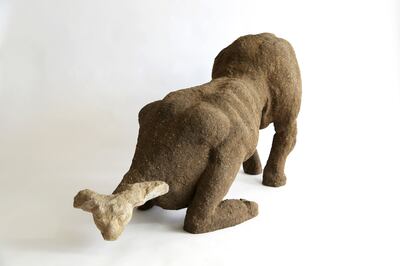
On the first floor sits five new sculptures, four of which form a sculptural installation animated by choreographed lighting. All are formed from mud, created around artifacts – ancient masks or fragmented statue heads – that Cherri purchased at auction.
These objects are pieces deemed unworthy of museum collections, and therefore omitted from historical narrative. It’s even possible these objects are forgeries, or smuggled abroad before emerging on the legal market. Cherri is less concerned with their authenticity, but rather aims to give them new life and, through his artworks, sneak them into museums and cultural institutions, where they can be seen again.
The untitled installation is a retelling the Mesopotamian myth about the King of Uruk Gilgamesh, written in 2100 BC, where his rival-turned-companion Enkidu is formed from clay and water by the gods, and later helps him in his epic exploits. Part animal, part man, Enkidu is often depicted as a man with bull’s horns.
The main sculpture is a 2.5-metre statue of Gilgamesh, with an Egyptian death mask serving as his face. His hands are covering his heart as he gazes in sorrow at the scene before him.
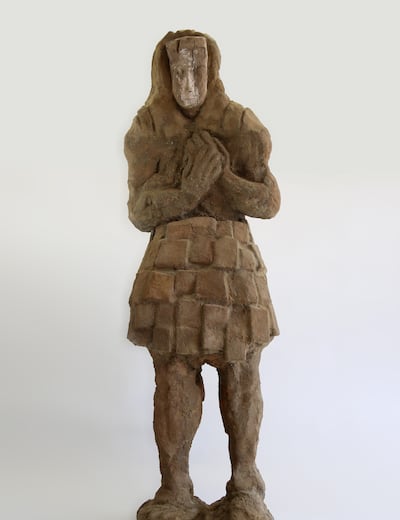
“The sculpture facing Gilgamesh is the scene of the Enkidu’s death. In the story, when Enkidu is killed for defying the Gods, there's a very beautiful, long lamentation where Gilgamesh cries for his friend,” Cherri says. “So facing him will be a pile of mud with only Enkidu's horns – because when he becomes mud again after death, all that remains is the horns.
“Witnessing the scene are two animal sculptures. I use stone animal heads I got from an auction house. The animals are gathering around the scene to see what happened, sniffing the ground and the piles of mud, smelling the earth,” he adds. “The lighting will start neutral, then a spotlight on Gilgamesh that casts a shadow on Enkidu, then he gets lit, followed by the animals. I wanted it all to become alive, playing with the light and shadows.”
The neighbouring room houses The Boy Dreamer, a sculpture of a boy with a metal animal mask and long hands that reach the floor, making it look like the figure is emerging from the earth, with footprints instead of feet.
On the second floor is Cherri’s celebrated three-channel video installation Of Men and Gods and Mud (2022), for which he was awarded the Silver Lion at the 59th Venice Biennale of Art.
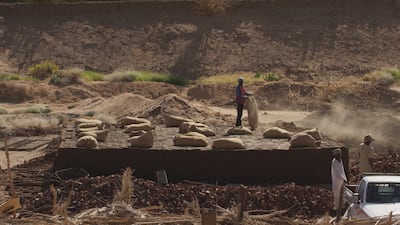
Shot at the Merowe Dam on the Nile River in Northern Sudan, it follows a group of brick makers creating fundamental building materials from mud. The 18-minute loop is the latest in an ongoing series of film projects Cherri has been working on for several years, all dissecting pervasive social, political and cultural issues.
The series started with The Disquiet (2013), which looked at the active fault lines cutting through Lebanon, connecting natural and man-made catastrophes, followed by The Digger (2015), which investigated the unearthing of a UAE Neolithic necropolis.
The Dam (2022), shot at the same time as Of Men and Gods and Mud, is a fictional feature film, which follows traditional brickyard worker Maher near the Merowe Dam. Every evening, he secretly wanders off into the desert to build a mysterious construction made of mud. When the Sudanese people rise to claim their freedom from dictatorship, his creation starts to take a life of its own.
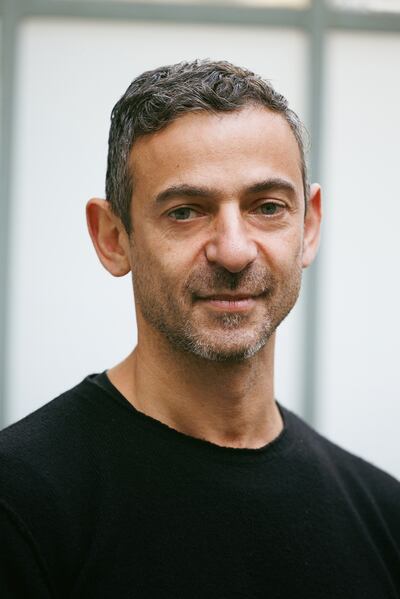
“We started to shoot and prepare the film when the demonstrations started, and then in 2019, we were there when the fall of Al Bashir happened, so we had to stop and leave the country," says Cherri.
“Then Covid happened and we came back in 2021. What I shot in 2019 is the footage I used for the video installation and we had to shoot everything again in 2021 for The Dam, so they have separate footage, but both of them have their starting point in the same brickyard.”
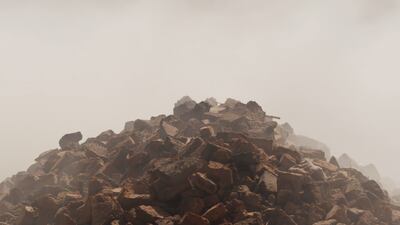
The construction of the Merowe Dam – the largest hydropower plant in Africa – in the early 2000s led to the displacement of more than 50,000 people, social unrest, the destruction of ecosystems and the submersion of Nubian archeological sites and artifacts.
Locals refused to leave their land and the regime opened the dam gates regardless. Today, the survivors continue to live around the artificial lake, risking floods and other issues caused by the altered environment.
“When I went there, the idea was to go, meet and talk to the people who are displaced by the construction of the dam,” Cherri says.
“For me, this dam was a metaphor of these authoritarian regimes and dictatorships that create disruptions. In the end, this disruption has consequences that destroys ecosystems and that's my entry point into the materiality of mud, as a way to understand these stories and histories.”
Humble and Quiet and Soothing as Mud runs until January 7 at Swiss Institute, New York
